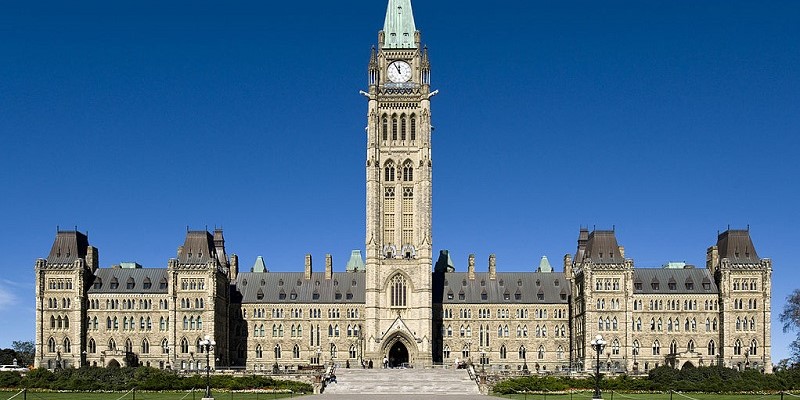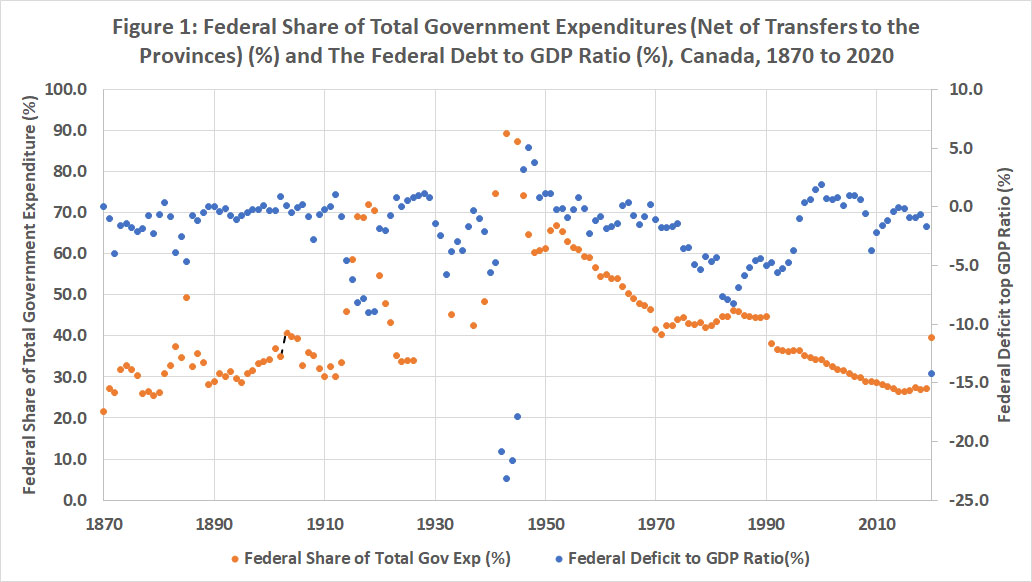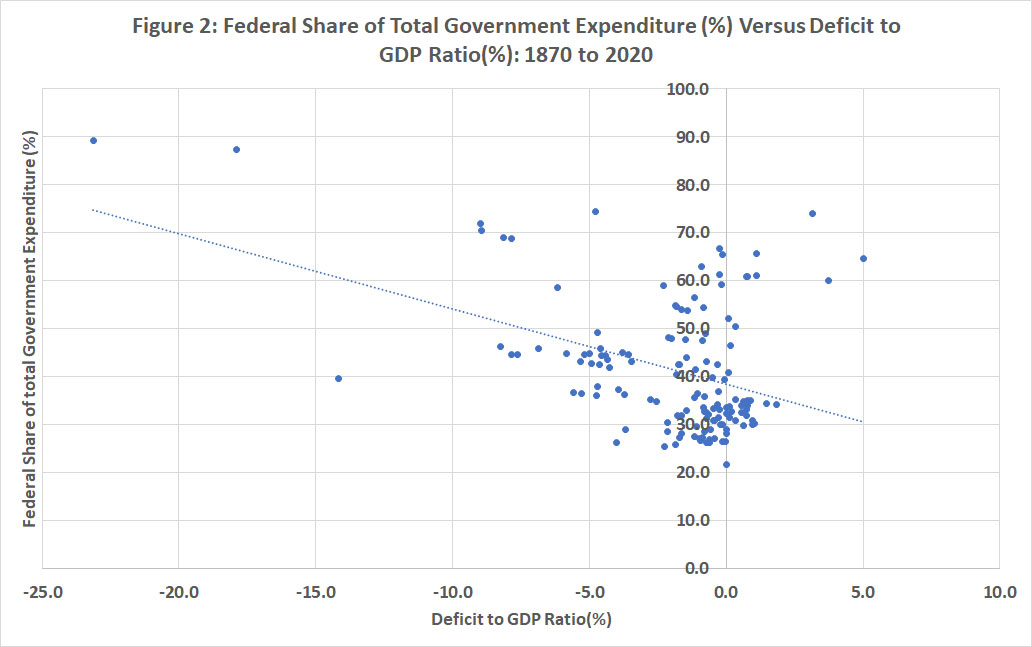Ottawa expanding its share of government spending in Canada

The pandemic saw federal government spending increases unseen since the Second World War. This increase affects not only the federal but also other levels of government in terms of spending balance.
Indeed, expenditure shares by tier of government provide a measure of whether a federation is more centralized or decentralised, and over time that balance changes. While Canada’s Constitution lays out the expenditure responsibilities and revenue tools of the federal and provincial levels, since 1870 there has been a give and take of spending responsibilities that reflect the policy decisions, politics and demands of the era. This balance depends on the state of federal and provincial finances, Ottawa’s willingness to assert federal spending power with respect to the provinces, and the quality of provincial leadership in pushing back. When it comes to federal finances, eras of substantial deficit financing seem correlated with large increases in federal expenditure shares that take time to retreat from.
In constructing a measure of the federal expenditure share since Confederation, a number of data sources are needed. Annual national GDP data and federal deficits are easily acquired from established sources, but constructing total government expenditure from 1870 to 2020 is more challenging. While annual data on federal spending and federal transfers are available, expenditure for total government expenditure in Canada is more problematic. From 1870 to 1926, there are annual total government expenditure numbers from Mac Urquhart’s GDP estimates based on goods and services spending.
However, federal transfers to the provinces during this period are readily available and averaged about 15 per cent of federal spending and are used to estimate federal spending net of transfers for 1870 to 1926. As for provincial transfers to municipalities, they were relatively undeveloped during this period thus making spending on goods and services by the provinces and municipalities a reasonable measure of their spending.
There’s a gap from 1927 to 1932 and then total expenditure estimates only for years 1933, 1937, 1939, 1941 and 1943 from Historical Statistics of Canada (SeriesH161- 175; H176-187 and H188-196). The period from 1945 to 1969 is again annual data and from Historical Statistics of Canada (as noted above). For the period since 1970, the years 1970 to 1990 are from the 1995 Fiscal Reference Tables while 1991 to 2020 is taken from the 2021 Fiscal Reference Tables.
So, what are the results?
The first chart plots the federal share of total government spending and the federal deficit-to-GDP ratio. Until the First World War, the federal share of total government spending rose gradually, with a spike during the railway building era. The federal expenditure share averaged 33 per cent. The start of the First World War and the demands of the war effort sparked a shift in fiscal balances that saw the federal share soar past 70 per cent.

This period also saw the federal government acquire additional revenue tools—namely income taxation and the federal sales tax—that expanded its ability to spend during the post-war era. While the 1920s saw a rebound in provincial and municipal expenditure shares, the federal government share remained higher than the pre-war period at about 35 per cent.
The Second World War saw another massive spike in the federal expenditure share peaking at nearly 90 per cent in 1943. The share then declines but equals approximately 60 to 65 per cent during the 1950s. The late-1950s and 1960s see some abrupt downward shifts reflecting transfer regimes changes such as the onset of formal federal transfer arrangements including equalization and medicare. As provincial health, education and social spending continues to rise after the 1960s, the federal expenditure share continues to decline, picking up steam during the fiscal crisis of the 1990s and reaches just under 30 per cent by 2016—basically back to where it was prior to the First World War. It remains there until 2020 when there’s a jump to 40 per cent.
When one compares these federal expenditure share spikes to the federal deficit-to-GDP ratio, the spikes are definitely accompanied by large federal deficits. After both world wars, even though the deficit-to-GDP ratios fall, the federal expenditure shares remain high for some time. Essentially, the deficits provide an opportunity for Ottawa to expand its fiscal footprint, with the demands of the crisis period providing the justification for new revenue tools to meet those perceived demands. The second chart shows a correlation between larger federal deficit-to-GDP ratios and federal expenditure shares.

Sources: 1870 to 1926: Urquhart, QED 586. 1933 to 1969: Historical Statistics of Canada. 1970 to 1990: Federal Fiscal Reference Tables (1995), Spending net of transfers to lower tiers. 1991 to 2022: Federal Fiscal Reference Tables (2021), Spending net of transfers to lower tiers. GDP: Urquhart and Statistics Canada. Federal Fiscal History (2017) and Fiscal Reference Tables.
With the expansion of federal spending during the pandemic era and the large deficits, the federal government has again expanded its expenditure share. For this to be sustained over the long term as deficits come down, Ottawa will still need to finance them. Currently, some of that is being provided by a post-pandemic boom that’s sparked a revenue surge. However, at some point the economy will slow and for the federal government to continue its initiatives in social and infrastructure spending, dental and child care, it will inevitably have to cut spending in other areas or raise taxes. History suggests the latter is often a more likely outcome.
Author:
Subscribe to the Fraser Institute
Get the latest news from the Fraser Institute on the latest research studies, news and events.

